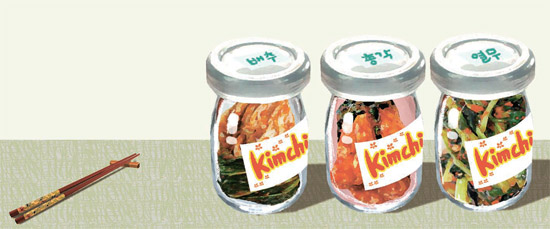Trendy, modern kimchi, please

However, the kimchi market makes you doubt the sincerity of these praises; all we can hear from the Korean kimchi industry are sighs and cries. From January to May this year, not a jar of kimchi has been exported to China, while we have imported nearly $50 million worth of kimchi from China. Moreover, kimchi exports to Japan have shrunk by almost 20 percent. Japan buys 80 percent of Korea’s kimchi exports, and such a drastic reduction from a major market will have a serious impact on overall kimchi exports this year. Korea’s kimchi is exported to 52 countries around the world but it is mostly consumed by overseas Koreans, and overall the size is relatively small.
Domestic demand has always been the biggest, but domestic consumption is not very lively. The size of the market is about 1 trillion won ($896 million), about the size of the kimchi refrigerator market. It does not have much potential to grow. These days, each Korean consumes an average of 68 grams of kimchi daily, far smaller than the 92 grams we ate just 10 years ago.
Why is kimchi being consumed less and less at the same time it is garnering interest and praise from abroad? A government official in charge of the industry explained that it is not easy for foreigners to appreciate the taste of the traditional food, and the fermented vegetable requires specific storage and distribution. Therefore, most of the government spending on kimchi goes to publicity.
How then can we boost the consumption of kimchi by Koreans? The most obvious answer is to reintroduce the traditional taste of kimchi. But there are more reasons hindering kimchi’s dominance on the table.
As nutritious and healthy as kimchi is, it is also a major cause of sodium overload, and it is hard to cut down on sodium in the traditional recipe. In fact, kimchi can be prepared with salted fish juice and spices, but most households do not keep that kind of brine at home.
How about seeking to modernize kimchi instead of fixating on tradition? We need to keep experimenting with new methods until kimchi recipes with drastically lower sodium contents are developed. Rather than continuing the century-old tradition of Napa cabbage kimchi, we may need to explore alternative versions that young people and foreigners can enjoy.
*The author is an editorial writer for the JoongAng Ilbo.
by YANG SUNNY










with the Korea JoongAng Daily
To write comments, please log in to one of the accounts.
Standards Board Policy (0/250자)